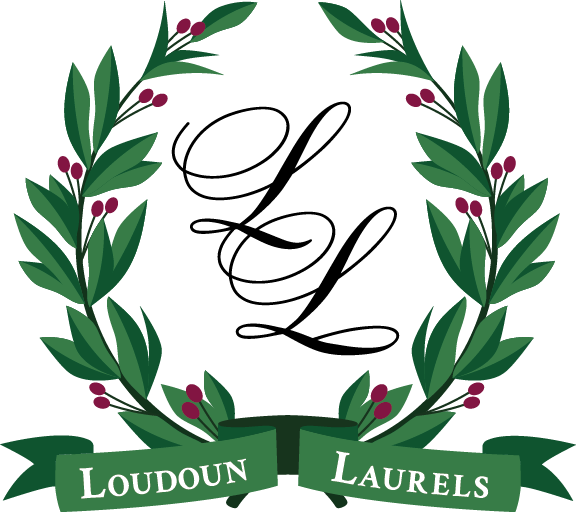What Loudoun Means to Me
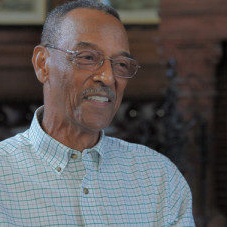
“What Loudoun Means to Me”
by James P. Roberts
2011 Loudoun Laurels Stewardship Award Recipient
I am truly a product of Loudoun County, and of Leesburg. I was born and raised on Loudoun Street in Leesburg, and some of my siblings still live in that house built over one hundred years ago by my grandfather. It was always instilled in me by my parents, grandparents and elders that we are all somebody, regardless of circumstance; they never let me forget that we all have something to give and should always try to do something in our community to serve and promote others.
Loudoun County has given me the opportunity to do just that.
I left Leesburg for a short while to serve in the United States Navy, and when I returned from serving my country I married my high school sweetheart and moved to Middleburg.
In Middleburg, I had the honor and privilege of serving in a variety of positions that allowed me to practice what I’d been taught as a child. I served on the Town Council as chair of the Zoning Appeals Board and chair of the Trees and Street Commission. I was the first minority to serve on the Middleburg Fire Department, and also became an Emergency Medical Technician (EMT). I was honored to be named “Fireman of the Year” in 1978.
For 19 years I was the Scoutmaster of the area’s first African-American Boy Scout troop; quickly, that troop grew into Loudoun’s first integrated troop. I was awarded many honors and recognitions in my service as Scoutmaster, including Woodbadge and the Silver Beaver. Afterwards, I continued to serve the Scouts, taking on leadership roles with both the Explorer Post and the Cub Scouts. My service continued for 40 years.
Another moment of which I’m extremely proud was when I served as a founder of the Windy Hill Project in Middleburg. Windy Hill was founded on a simple idea, that all of our area’s citizens have access to affordable, comfortable, safe housing. The Windy Hill Foundation is still going strong and has brought its important message to similar communities in Fauquier County as well as additional communities here in Loudoun.
All of my children were educated through Loudoun County Public Schools. When I was in elementary and high school, I had to attend segregated schools, but my children were fortunate enough to attend integrated schools and were welcomed by teachers and administrators. Although my wife and I never had the opportunity to attend Loudoun County High School, I’m proud of the fact that my oldest daughter is an assistant principal there.
Loudoun County has a rich history, and I’ve always heard a strong calling to preserve it. I was appointed to the Thomas Balch Library Commission and served as its chairman and currently serve as a commissioner on the board. I condust walking toughs of downtown Leesburg twice a year, and am always awed by the fact that so many people are interested in the rich history that is Loudoun. To conduct these walking tours and share that history with others is a joy and an honor.
Loudoun, to me, is the rich and diverse history that defines it, and I feel privileged, not only to preserve that history, but to pass it along.
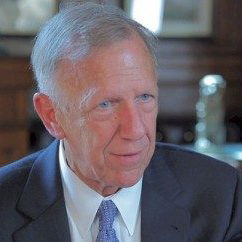
“What Loudoun Means to Me”
by Bob Sevila
2011 Loudoun Laurels Lifetime Service Award Recipient
I first moved to Loudoun County in the 1970s with my wife, Nancy and three children and began practicing law in Leesburg. Though I had grown up in Herndon, my mother had been a nurse at Loudoun Memorial Hospital during my high school years and I developed many friendly relationships and a sense of comfort with the Leesburg and Loudoun County communities.
Like Herndon in the early 1970’s, Loudoun and Leesburg struggled to maintain their identities against the amazing forces of growth and urbanization. What had been, through the 60’s, a sparsely settled, fairly homogeneous county of large and small farms, speckled with small towns, villages and hamlets, began to take on a more suburban character while still proudly declaring that it was not part of Northern Virginia. During the next 35 years, change swept across the County. The opening of Dulles Airport in the mid-60’s attracted residential, commercial and employment related development. Sterling Park, Sugarland Run and Countryside led the charge of residential development westward along the Route 7 Corridor. With the residential development came demands for more retail and employment opportunities for the County’s new residents.
In the mid-1970s, an agricultural fair was held on the courthouse lawn in Leesburg. Farmers sold vegetables, cheeses, jellies, jams, apple butter and honey as Loudoun celebrated its agricultural heritage. At that time there were approximately 72 large dairy farms in the County. By 1995 that number had shrunk to a handful and by 2005 there were only two dairy farms left in the County. In a little more than 30 years, the conversion was complete–Loudoun had gone from an agricultural community to a suburban community of nearly 300,000 residents.
Yet, in many ways, both Leesburg and Loudoun County have managed to retain their small-town feel and sense of community. Just as my family and I were immediately accepted into the community when we first moved here, people moving to Loudoun today, even with a population four times what it was then, have a similar experience. There was and still is a thriving historic downtown in Leesburg filled with friendly people who speak to strangers on the street. Within the County are countless service and volunteer organizations comprised of citizens who are dedicated to contributing to the quality of life in their communities and within the County. In addition, and despite its rapid growth over the last 30 years, Loudoun still has significant forests and open farm land. County government has worked hard with private groups, landowners and planners to ensure the long-term protection and preservation of these resources for future generations to enjoy. The hard work, dedication and commitment of these citizens, both long-term and short-term residents of the County, as well as their recognition of the importance of Loudoun’s heritage, have resulted in a comprehensive plan that has laid the groundwork for protection of these assets well into the future.
Today Loudoun is nationally recognized as one of the wealthiest and fastest growing counties in America. With this population growth have come diversity and opportunity which contribute to the community’s richness. Two thirds of the population has moved here from other parts of the country.
Loudoun’s attraction is a result of a number of factors, not the least of which is its location. Close to the District of Columbia, national forests, the Appalachian Trail, the Blue Ridge Mountains, the Potomac River and the Chesapeake Bay, Loudoun offers its citizens access to the center of our nation’s politics while at the same time having some of the most beautiful scenery in the country right in their backyard. In addition, Loudoun has an excellent educational system, a strong employment base (sometimes called the “Silicon Valley of the East”) and a wide variety of active and passive recreational opportunities that contribute to its quality of life.
Loudoun County is also rich with a history that includes the Revolutionary War, the War of 1812 and the Civil War. There are numerous battlefields, forts and historic sites that remind us of the strategic significance of our country’s history.
As the Washington metropolitan area continues to grow and expand westward, these ”special secrets“ of Loudoun County are surely to be “discovered”. I am confident that arriving new citizens of Loudoun County, thanks to the efforts of many dedicated citizens who have preceded them, will find the County a welcoming, open community with a well preserved natural and historic heritage with a strong sense of community and that they will continue the tradition of protecting and preserving that heritage for future generations.
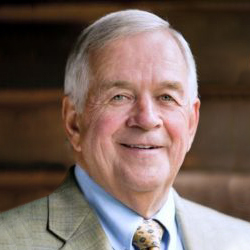
“What Loudoun Means to Me”
by Delegate Joe May
2010 Loudoun Laurels Business & Not-for-profit Award Recipient
Like many people, our family lived in a number of locations and states before we moved to Loudoun County in 1982. Little time elapsed before Bobby and I decided that this would be our last move. The reasons for this are legion.
First, there is the pure physical beauty of the Loudoun County environment, much of which is due to citizen efforts to maintain it as nearly intact as practicable. In addition, my first ancestors here, thanks to England’s George III and the Revolutionary War, were Hessian mercenaries from the Bavarian Forest area of Germany. They settled in the Lovettsville area and the two areas geographically closely resemble each other.
Predisposition aside, my family and I were welcomed immediately to the County, and to this day we enjoy walking the streets of the various towns and being greeted by acquaintances and strangers alike. Our children, although they reside in other places, still consider Leesburg and Loudoun County home and they enjoy the same warm reception when they visit.
Loudoun County and its surrounding areas have provided me with the opportunity to perform public service for as long as I’ve lived in Loudoun. I’m very proud of my eighteen years service in the Virginia House of Delegates and I believe that I have been permitted to continue to serve because the values and philosophy of the majority of Loudoun mirrors my own. I am grateful if that is the case.
Loudoun County’s environment has helped our company, EIT, succeed over 35 years and moving forward. Again, the values and philosophies of Loudoun have meshed nicely with our business practices and to a mutual benefit. I take great pride in providing a reliable livelihood for a number of Loudoun County residents. Typical of the County, the most often asked question by prospective employees is, “How good are the schools and what is the quality of life?” The answer to both questions is, unfailingly, “great.”
From a purely personal perspective, my twenty nine years in Loudoun have allowed me to raise my family, earn a good living while working with people and surrounded by people I like and respect, and enjoy a certain measure of success in technology and politics.
Every bit as satisfying has been the opportunity to pursue my history avocation, particularly Civil War History, with a number of individuals far more accomplished than I. And finally, I revel in the absolute beauty and open areas of the Loudoun Countryside and marvel at the strength and abilities of its people. I am an exceedingly fortunate man.
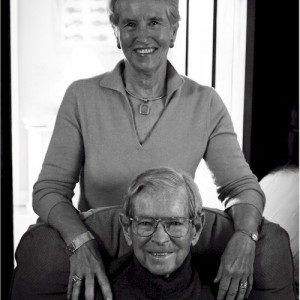
“What Loudoun Means to Me”
by Judy Washburn
2010 Loudoun Laurels Lifetime Service Award Recipient
Lang and I moved to Loudoun County in 1977. We bought a house dating from the 1820’s and settled down to enjoy country life. We took advantage of the eastern part of the County and all that it’s more urban lifestyle offered while enjoying our wonderful town of Middleburg.
As a Girl Scout leader in the early 1980’s I became aware of a small, poor remnant of a segregated community on the western edge of the village; it was served only by outhouses and town water that had to be carried, by bucket, to the homes. It was hard to believe that these conditions existed in such lovely village and that nothing had been done to address them.
I was fortunate to meet a local citizen, Rene Llewellyn, who brought together people who would start an organization for this purpose. The Windy Hill Foundation was created “to provide safe, decent and affordable housing to low- and lower-income families in Loudoun, Fauquier and Clarke counties to encourage self-improvement and self-sufficiency among tenant residents”. This public/private partnership has resulted in the building of more subsidized and affordable housing and the creation of a model that is successful and, though all too slowly for many of us, spreading across Loudoun and its neighboring counties.
What makes this model particularly unique is the family programs that it provides for its residents. They include tutoring and after school programs for children, scholarships and activities, and help for the elderly.
Loudoun County is an extraordinary place. Its combination of rural and urban has managed to provide the benefits of both approaches to life, while for the most part escaping the worst of the associated liabilities. Ours is one of the fastest growing and wealthiest counties in the country. In Loudoun one can find some of the best of 21st century life, learning and lifestyle side by side with villages that retain much of their 19th– or late 18th-century charm.
One of the things I admire most about Loudoun is the way its people approach the many problems that arise in such a growing and increasingly diverse place, problems that appear in other places to be all but intractable. Our solutions may not be perfect, but, in my experience, the spirit with which the people of Loudoun seek to address them is extraordinary. Take for example my experience with the problem of affordable housing.
This is just one small example of citizens in our County banding together to tackle a difficult challenge and, in the process, creating a model that can be used in many different locations.
I am proud to live in Loudoun County where, although the problems are many, its people continue to be a beacon of hope in a fast changing community.
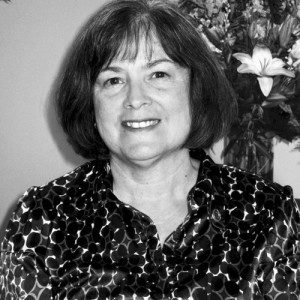
“What Loudoun Means to Me”
by Karen Hatcher Russel
2009 Loudoun Laurels Stewardship Award Recipient
Loudoun County means family to me.
Each week, as I read the community sections of the local newspapers, I am reassured that Loudoun County is a truly wonderful place to live and raise a family. Not only our personal families, the family that is our community.
My personal family was filled with wonderful, caring individuals who provided me with a nurturing and supportive context in which to learn and grow.
Today, as I go about my day-job creating services with businesses and the community for the disabled, I witness firsthand the many acts of kindness and invaluable support that are provided by Loudoun citizens to create opportunity and inclusion for Loudoun citizens who are less fortunate.
Lovettsville, the small German settlement where I was born and raised consisted of about 50 houses that were surrounded by farms. At that time, Loudoun County was very rural and had a population of 20,000.
My decorated Dad, Maurice Hatcher, had just returned from fighting in the Battle of the Bulge and other World War II campaigns to run his sawmill and lumber business. One of twelve children who moved from southwest Virginia to Lovettsville, he graduated from Lovettsville High School where he met my mother, Evelyn Baker.
Evelyn was one of the five children of Etchison and Rebba Brown Baker. Her uncle, Renice Brown owned and operated Brown’s Funeral Home, and her father, like many others, worked for the railroad in Brunswick, Maryland.
I learned the importance of helping my community family from the members of my own immediate family.
McClain’s Store was the main grocery located in the center of Lovettsville. Owned and operated by my Aunt and Uncle Beatrice and Bob McClain, it provided fresh meat, produce and clothing to the entire town and surrounding farms. It also offered families the opportunity to maintain a charge account, accounts that were always open. My Uncle Bob, who also served as county supervisor, felt it was his responsibility to keep his community fed and clothed, no matter what the economic situation.
Every member of my family subscribed to this responsibility. My Aunt Nell Jacobs, who owned and operated Aunt Nellie’s Kitchen, my uncle Berkeley Baker, who was the Lovettsville Post Master, his wife, Aunt Edna, who cut and styled everyone’s hair, and my Aunt and Uncle Jim and Maureen Reed, who operated a dairy farm across from the now Lovettsville Community Center.
My brothers and I experienced love everywhere we went in our community, and when I married my high school sweetheart, who served as a company commander in Vietnam, we returned to Lovettsville to raise our children because of the community’s strong family values.
Our children received an excellent education at local schools beginning with Douglass Elementary in Leesburg where Principal Pete Whitmore consistently dispensed kindness and love to every single child.
In 1977, I began to work with ECHO (Every Citizen Has Opportunities), a local non-profit created in 1975 to provide supported employment, training and transportation to individuals with disabilities.
I have been associated with ECHO for 33 years now and have had the opportunity to create partnerships with many local businesses and government agencies.
As Fran Nichols, my mentor at ECHO and the wife of Ken Nichols of Nichols Hardware in Purcellville, believed, Loudoun County adults and children with disabilities deserved proper services and support.
Every day I work with ECHO to provide jobs, purpose and a future for people with disabilities in our community, my work underscores my belief that Loudoun County means family to me.
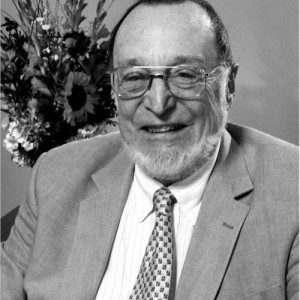
“What Loudoun Means to Me”
by Paul Ziluca
2009 Loudoun Laurels Stewardship Award Recipient
We came to Loudoun County 30 years ago and saw a sleepy, lightly populated county of fifty plus thousand that had been much the same for many decades. Our new home, actually an ancient farmhouse on the western boundary, was along a picturesque dirt road with plenty of history all around us.
My years in Loudoun most assuredly covered great variety, from chasing fox over hill and dale to chairing the Loudoun Republican Party and more recently as an 8-year Chairman of the Virginia Outdoors Foundation, an independent state agency and the largest conservation easement holding entity in the nation. It was with VOF, then-owner of Aldie Mill, that I experienced a major public challenge, that of completing the Mill’s preservation. It was dead in the water; nothing was happening and its doors were closed to the public. It took another $600,000 after the previous expenditure of something like one and a half million dollars. However, there now stands in the southeastern side of the county the largest existing merchant mill of its kind, visited by many, notably President James Monroe in the 19th-century, President Herbert Hoover in the 20th and hopefully many, many more in the 21st.
Today, Loudoun is a fast-growing, high-income abode for some 300,000 souls. The west retains many of its rural characteristics while the east is now a thriving, urbanized employment center with all the usually beckoning suburban amenities.
For me, Loudoun is an ideal combination of country and urban life. We are blessed with many major historic sites and four nationally recognized Civil War battlefields covering approximately 25,000 acres, much of which is still pristine. One can still enjoy a drive through unspoiled countryside to small villages such as Unison or Waterford, or just as easily go east for more cosmopolitan fun. And Loudoun works hard at trying to make this mix function well through the actions of county government and the cooperative efforts of our preservation groups, businesses and ordinary citizens. Yes, sometimes we go too far on the side of development but nevertheless, sooner or later, the tide once again swings toward preservation and conservation.
If one would take the time to read through our Comprehensive Plan, including the recent addition of a Heritage Preservation Plan, we would find a reasonable prescription that I believe in for both preserving our open spaces and heritage sites as well as accommodating the intense population and economic pressures unfolding all around us. Having been one of many who had a hand in the plan’s development, I can say with great assurance that it provides a voice for all the stakeholders, such as property owners, developers, local government, preservation groups and interested citizens. Successful implementation, however, ultimately rests in the hands of the community, as it should.
Loudoun County is its great mix of old and new, open meadow and urban life, west and east. And it is the marvelously democratic way of dealing with this mix that I am proudest of. Yes, and to have had a small part in binding together good citizenship and good government is what I’ll be thinking about most often as I remember my magnificent 30 years of living in Loudoun County.
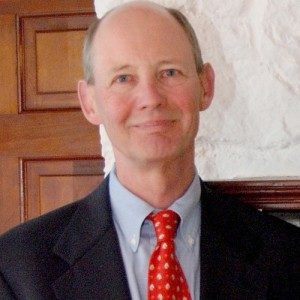
“What Loudoun Means to Me”
by Childs F. Burden
2008 Loudoun Laurels Stewardship Award Recipient
I grew up on the north shore of Long Island in the 1950’s, and during that decade “development” took over much of the agricultural and open space throughout the area.
I don’t recall that there was much, if any, protest or community effort to guide that evolution; folks just seemed to accept it as inevitable. I witnessed the very character of the land change. The sense of place we enjoyed evaporated and the loss left a strong impression on me.
Eventually, I headed south to attend The University of Virginia. I was immediately impressed by the strong feeling of tradition that exists there; the spirit of Mr. Jefferson hovers over the college and every day students are reminded of the school’s history, and renewed by it. I fell in love with the Commonwealth during this time and, after graduation, my wife and I moved to Loudoun County to be close to Washington, D.C.
That was 35 years ago.
At the time the county population was about 43,000, and Loudoun hadn’t grown much: as far back as 1800 there were about 20,000 people living here. You can do the math.
It didn’t take long for us to appreciate that, like Albermarle County, home of Mr. Jefferson’s University, Loudoun County also has an incredibly rich history as well as an impressive array of celebrated personalities and historic sites.
Throughout its 252-year history, ever since the tidewater aristocracy began building here in the mid 18th century and ever since the Scot, Irish and German settlers moved to the area around the same time, Loudoun County has been the intersection of north and south.
There is a wonderful richness and diversity in our history and our architecture: on the one hand, we have the old plantations like Oatlands, Rokeby, Oak Hill, Morven Park, Rockland, Llangollan, Selma and Belmont, and on the other, we have the Quaker settlements of Waterford and Lincoln.
We have an abundance of historic sites that will teach our heritage to visitors for generations to come.
We are blessed with the homes of George Carter, James Monroe, Charles Fenton Mercer, Thomas Swann, George Rust, George C. Marshall and others.
We have significant Civil War battlefields such as Balls Bluff, Aldie, Middleburg, Upperville, Unison and Bluemont.
We have the important history of Colonel Mosby, the Gray Ghost, whose skirmish sites still remain largely intact.
We have the old mills and mill sites, the old cemeteries, and the old roads that wander about our county just as they have for over 250 years.
Loudoun County clearly retains a sense of place – even as our population grows to 300,000 residents. I think back on my Long Island childhood and how that area developed without retaining its roots, its heritage. Then I think about how Loudoun has grown but has managed to retain its historic integrity.
Why is that?
How is that?
I believe that Loudoun has succeeded largely because of a core group of dedicated residents, men and women, young and old, who embraced the responsibility of being involved. Their involvement helped the county grow without sacrificing its sense of place. Their involvement made certain our county heritage was not threatened, and if it was, it was defended. Many of the originals are gone now but others have stood up and replenished their ranks.
Political courage and active participation has clearly made a difference in keeping Loudoun from becoming Anywhere, U.S.A.; equally important, moving forward, is the education of all our residents about our county heritage. Over 70% of Loudoun’s residents have lived here for less than ten years and most live in the eastern part of the county.
Unless those of us who know, those of us who care, show them something of our past they will not take part in managing our future.
We all take great pride in the rich history and heritage of this county. But we should be just as inspired by the dedication and commitment shown by those among us who strive to keep our county, our home, so special.
That is my challenge to those of you who read these words:
Look around you and drink in the sense of place we enjoy in this county. Visit our historic sites; marvel at the rich diversity of our county heritage. Learn from where we have come and, with that knowledge, work to build and preserve where we shall go.
Take responsibility and do not be afraid to get involved. Know that what we enjoy here, the history, the beauty, the tradition, all of it is fragile and can disappear. Commit yourselves to its protection and preservation.
Seize the day; serve the morrow.
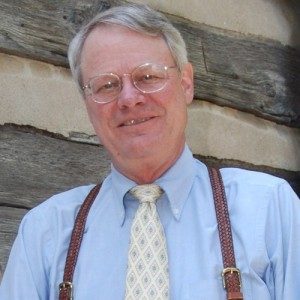
“What Loudoun Means to Me”
by G. Kimball Hart
2008 Loudoun Laurels Business and Not-for-profit Award Recipient
We live in one of the top five fastest growing counties in the United States and are one of the five richest. Depending on the year you pick, we can be #1 in either category. We also have view sheds, natural resources, farmland, history, and battlefields that must be protected and preserved. Therefore, in classic economic textbook terms, we have too many people with too much money chasing too little land. The result is land prices that are sky high.
As a result, many Loudoun residents drive long distances east for paychecks that can pay for this land. Those who work here, but can’t afford to live here, drive long distances into the county. The result, as we well know, is increasingly clogged roads and individual carbon footprints that are the size of Sasquatch.
A recent study, published by the Loudoun County Housing Advisory Board, compared Loudoun County to 31 other peer counties in the US with similar population, similar high average incomes, and similar locations near metropolitan areas. The average number of local government workers (teachers, policemen, firemen, and government staff) that commuted into those counties was 6%. The average figure for Loudoun County is 45%!
How can we provide housing that is affordable for this critical workforce while preserving open space and historic resources, mainly in Western Loudoun, without density packing Eastern Loudoun? It is really up to our current generation to decide on and set the policies that will determine the outcome of this debate. At the growth rates we are experiencing right now, whether we like the solution or not, it will be a done deal by the time the next generation takes over.
The Windy Hill Foundation, where I work, has spent 25 years conducting a small scale “experiment” in affordable workforce housing in Western Loudoun County. Using small, “in-fill” projects, often on donated or discounted land, and with generous local donations, the foundation has built 67 units of affordable workforce housing that collectively serves a little less than 20% of the population of Middleburg. All of this housing rents at significantly below market rate.
So, can the lessons learned in Middleburg be passed on to address the much larger affordable workforce housing shortage for Loudoun County? I don’t know. Yet! Here is my current best effort at defining the four things that must happen if Loudoun County is going to have any hope of providing affordable workforce housing on the scale that is needed:
1) Find and implement a whole menu of new incentives that will encourage developers to donate or discount the price of land to be used for affordable workforce housing;
2) Encourage more higher-density mixed-use developments where residents can live, work, and play in the same complex without having to drive;
3) Continue to fight like hell for Loudoun’s fair share of state and federal funding to support the construction of affordable workforce housing; and
4) Like Fairfax has already done, step up and dedicate a guaranteed source of county funding to support affordable workforce housing.
I think we are approaching a tipping point. If you listen carefully to the large employers who serve on the CEO Cabinet or the members of the Economic Development Commission, you will hear how much more difficult it is for them to hire and to retain key employees—at all levels of their organizations. Traffic and housing costs are increasingly pushing workers away from Loudoun County. My point is that those two factors are related. We need to be doing more than we have done and we need to be doing it very soon.
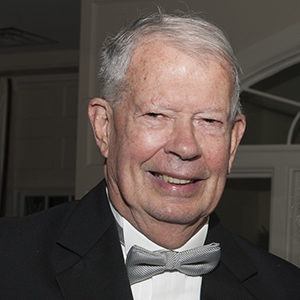
“What Loudoun Means to Me”
by Gene Scheel
2008 Loudoun Laurels Lifetime Service Award Recipient
Loudoun is no longer the homogenous county of a half-century ago, when I first viewed it. Its meaning depends on where I am.
I’ve been spending time in lower Loudoun, and when I see the treed streets with bicycle paths, varied housing, free tennis courts, smart and small neighborhood shopping centers, I think, “They’ve done it right.” Is there a more beautiful interior space in the Virginia Piedmont than the sanctuaries of Our Lady of Hope and Christ The Redeemer Churches? Ashburn Village and Farms, Broadlands, CountrySide, Potomac Falls, and South Riding are among the apexes of suburbia.
The towns and villages have charm, but on a more limited scale. Take South Maple Avenue or West Main Street in Purcellville. The old sections present small-town living at its best, but they visually come apart with their new urban extensions.
North King Street and West Market Street in Leesburg and East Washington Street in Middleburg (minus the gas station) work better as a unified whole. Clutches of small town streets in northeast Round Hill, the Ridge View subdivision of Middleburg, and southwest Purcellville present the old true neighborhoods of a Norman Rockwellian existence.
Ah, the artist would still love the early-twentieth-century Wild West-looking downtown of Purcellville. And if it were not for the continuous flurry of shops purveying antiques and other things one doesn’t need in old downtown Leesburg, he would smile upon that core––and smile more when sampling the fare of Leesburg Restaurant or The China King, that first county venture into “foreign food.”
Eateries were once the entertainment of Loudoun. Can the Purcellville Family Restaurant and Pine Grove Cafe make one forget that The White Palace no longer has its wood stove, which not only fed, but warmed the upper county during periodic bouts of no electricity during heavy snows? And if there is a vestige of calorie-rich Southern Cooking, once the trademark of Leesburg’s Laurel Brigade Inn, it’s to be found in covered-dish suppers at a host of small churches west of Route 15. At their best, such as at Austin Grove, they equal any fare.
Having company? You telephoned Dick James in Waterford, McClain’s in Lovettsville, Throckmorton’s in Round Hill, The B & A in Middleburg. Their owners knew how to select and cut steak. You told them how thick and how much.
Was there a perfect small village? Ten maybe. Bluemont, Lincoln, Philomont, and Waterford now vie for the honor. It’s not so much architecture, it’s their each having a store and a post office. One needs to speak to somebody to catch the flavor of a hamlet.
The twists and turns of southwest Loudoun lanes––the Beaverdam Creek Dirt Roads District––are the ultimate in terms of a landscape that can bring one back to a past now beyond memory. The surprise of coming upon a Bloomfield, Taylor Town, Unison, or Willisville, huddles of houses and a church, lacking only the human being out on the street.
Nostalgia? Yes, we settled for country sameness because we had never experienced rural life in a scope lengthier than two-month stints at summer camps.
My dirt road is still there. (I’ve gotten possessive, having cleaned it up for more than a generation). The adjoining farms are not. “Mr, Scheel, your cows are out.”––a common call now and in yesteryear, but no longer is every field fenced with a roadside gate to corral them in. No longer can I rely on Charlie Light and Jack Evans to take care of things if cattle raising got rough. “I’m either farmin’ or flyin’,” Jack used to say on his answering service.
Taxes on land, even with land-use taxation, are more then ten times the total amount (land and buildings) I paid before the 1969 reassessment started the steamroller. Am I getting anything more? I can’t think of too much. I could order a book from the library for free in the old days. Now it’s two dollars. The Bluemont Concert series is not my cup of tea. I could make it into the Washington Opera or National Symphony in an hour and park free on the street. I don’t need Ida Lee or a health club for exercise. I run cattle.
We had the Waterford Players and Middleburg Players, equals of anything on the stage here and now. The high-school musicals and the old Loudoun Choral Society presented works every bit as commanding as those of any group today, even though we were not the accomplished Master Singers––a step in the right direction as is the Loudoun Symphony and fledgling Loudoun Opera.
If you didn’t know everybody on the streets of town, at least they always nodded, smiled, and said “good morning.” You kept your doors open––”just drop it on the kitchen table if I’m out.”
Do you remember the short story “Only the Dead Knew Brooklyn,” or the book “You Can’t Go Home Again.”? Loudoun also had a past. I was part of it.
